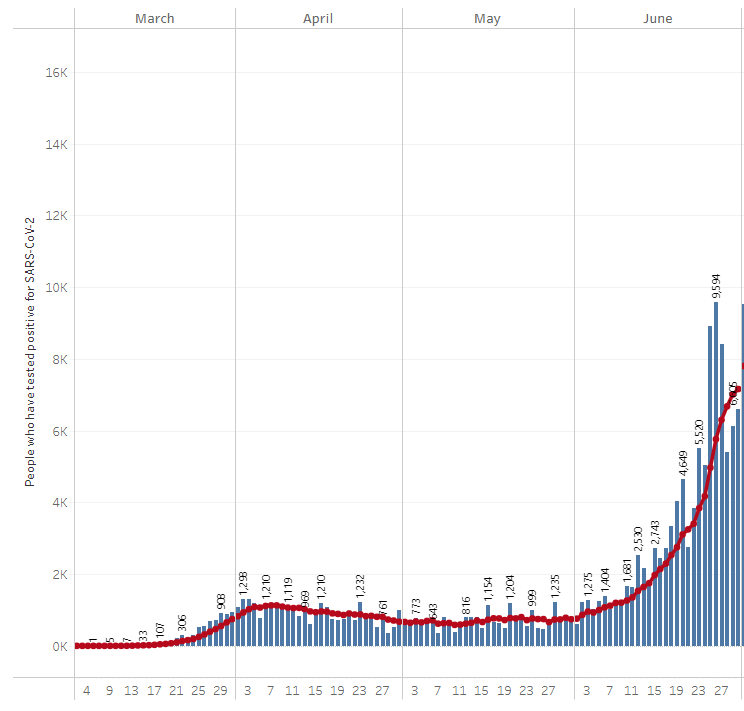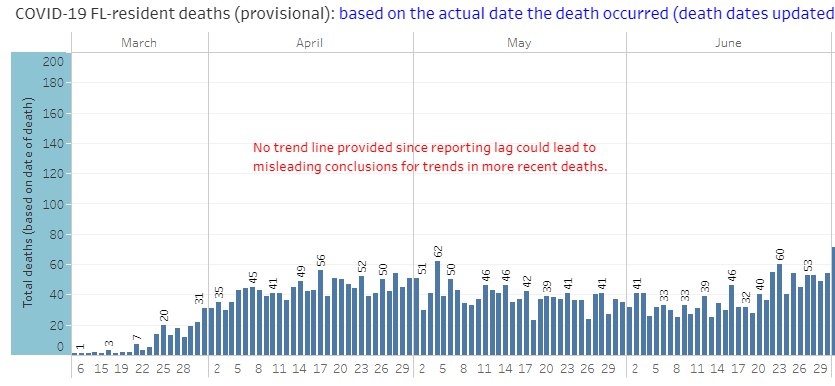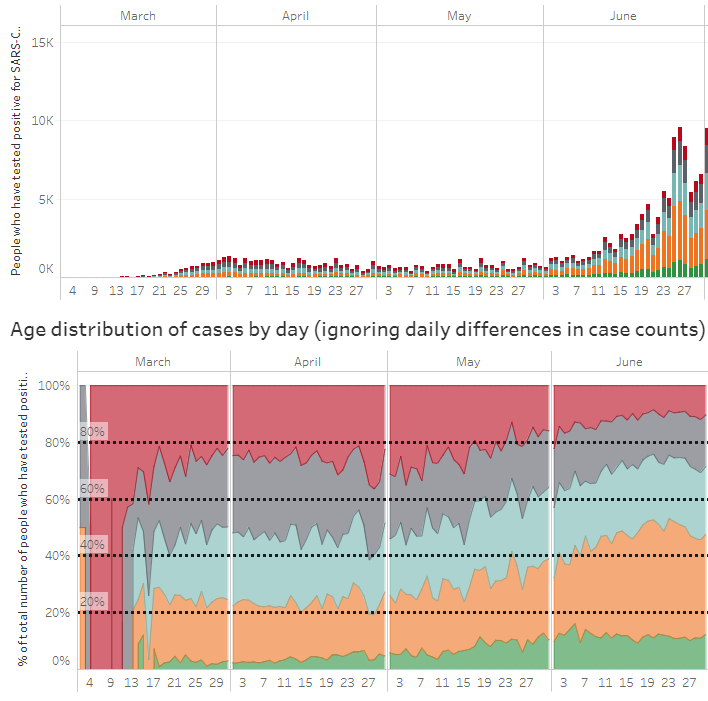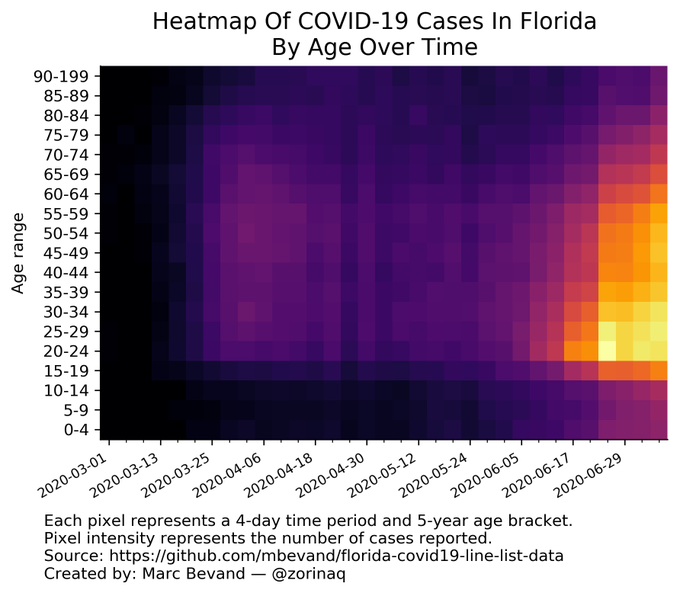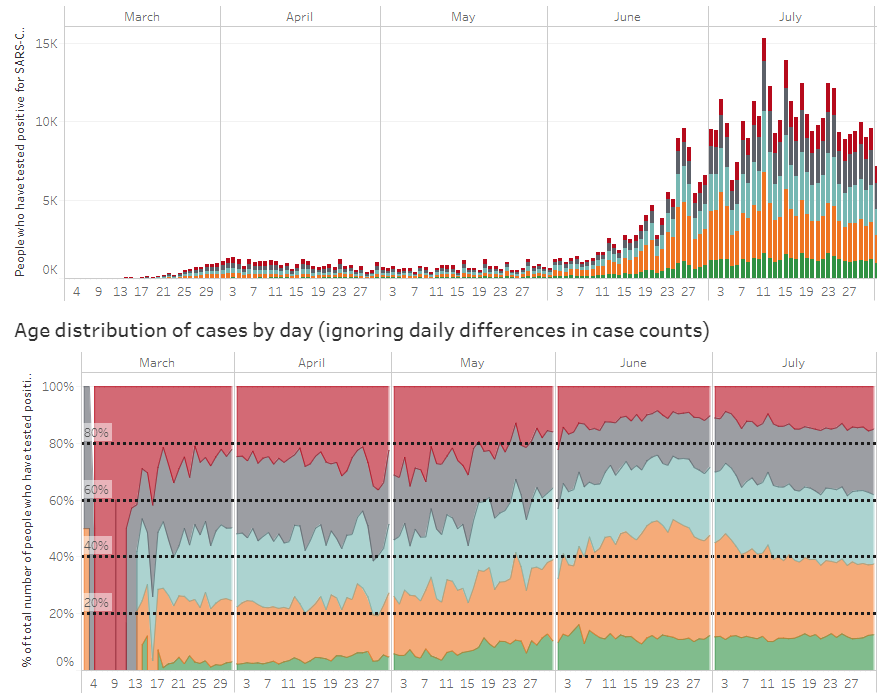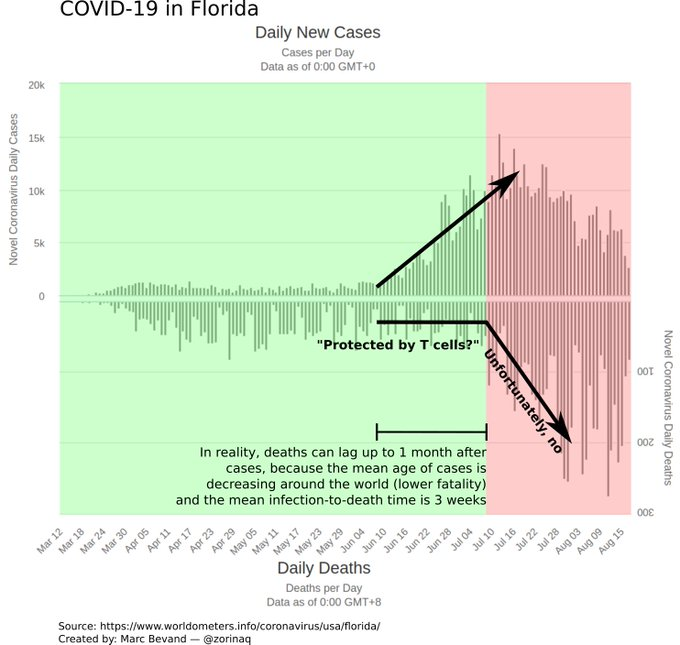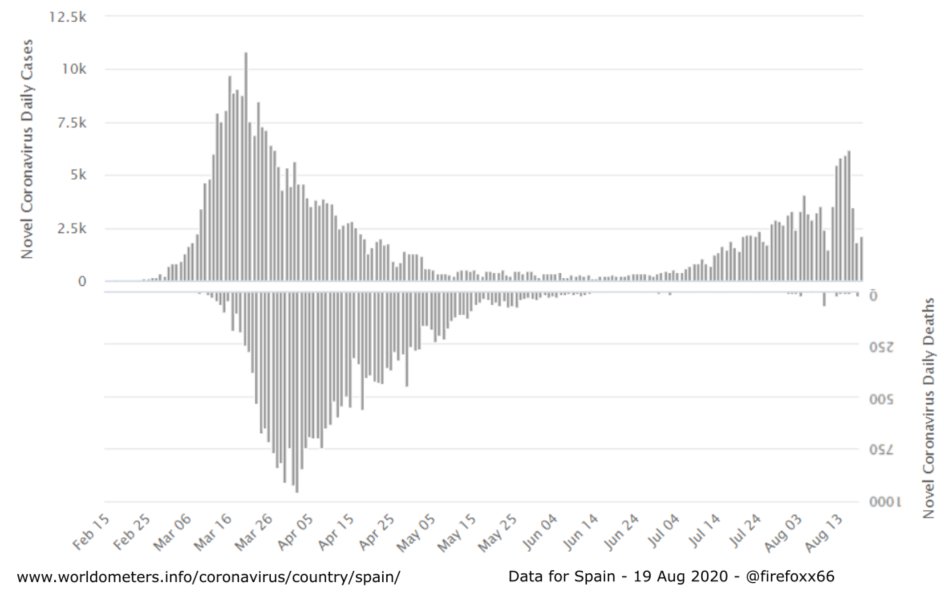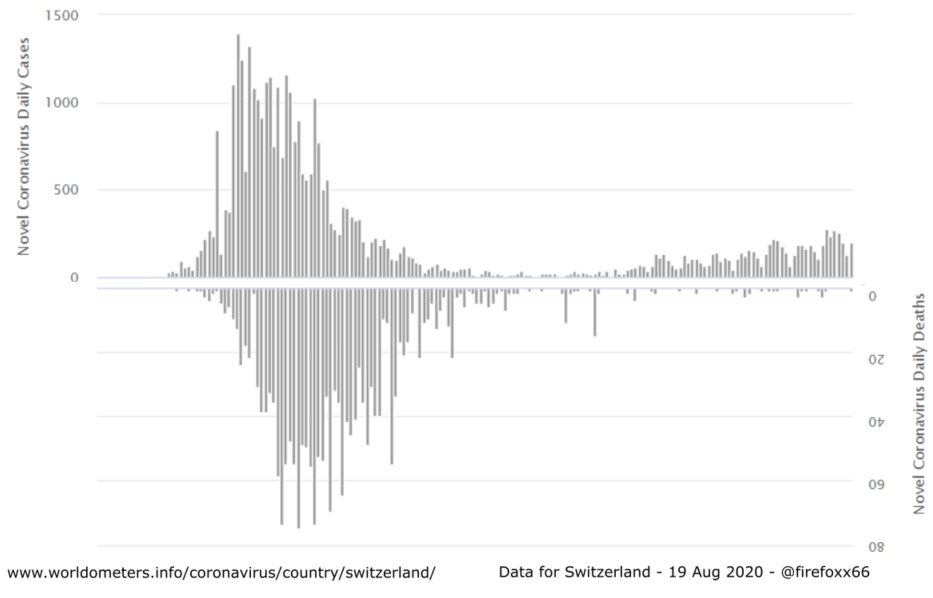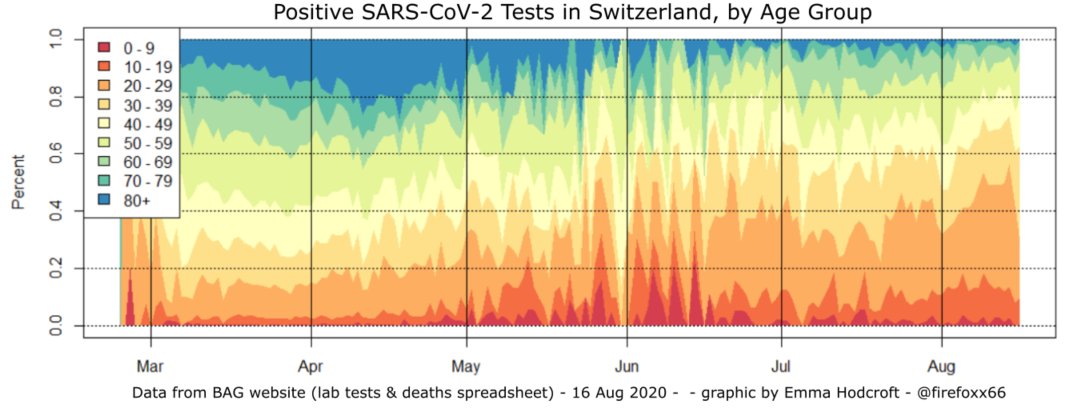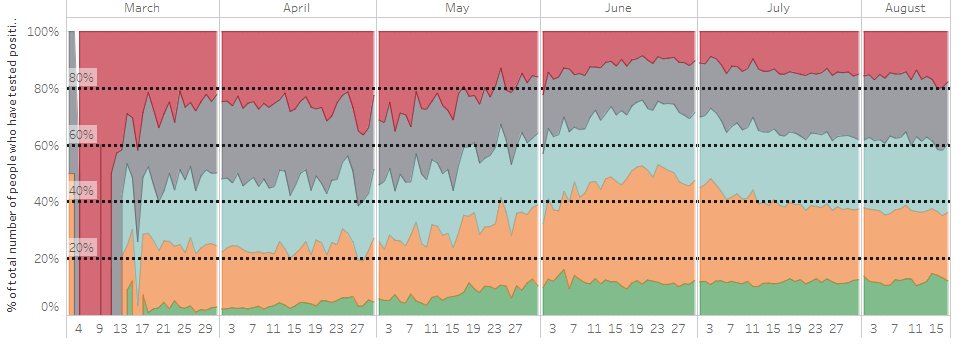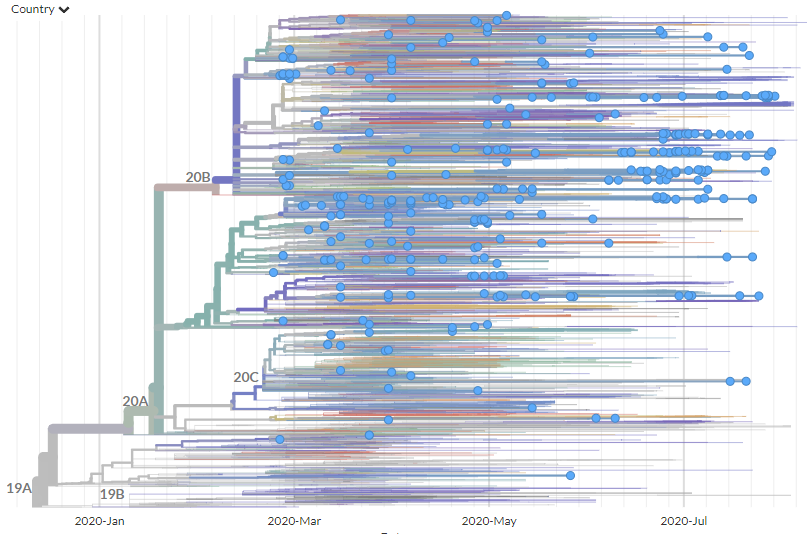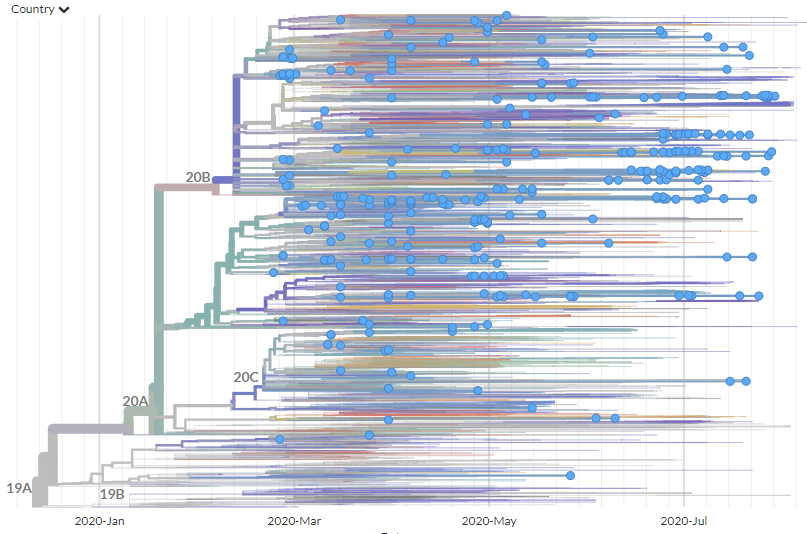In June, after reopening, #SARSCoV2 #COVID19 cases in Florida began to rise. Hospitalisations & deaths, however, stayed low.
Perhaps it just wasn& #39;t so bad after all? Perhaps something had changed?
We see similar trends in Europe now. So what happened in Florida?
Let& #39;s see
1/25
Perhaps it just wasn& #39;t so bad after all? Perhaps something had changed?
We see similar trends in Europe now. So what happened in Florida?
Let& #39;s see
1/25
Something was going on in the new cases in June - noted in the media across much of the US South: new cases were mostly in the young. Note the change in proportion of tests in 20-34 yo (orange) over time
Huh. Why might that be?
2/25
Huh. Why might that be?
2/25
@nataliexdean excellently explains 3 options:
1- More & more general testing (more likely to test any less symptomatic young ppl)
2- Elderly people being /more/ cautious
3- Young people being /less/ cautious
https://twitter.com/nataliexdean/status/1275431821422006274
3/25">https://twitter.com/nataliexd...
1- More & more general testing (more likely to test any less symptomatic young ppl)
2- Elderly people being /more/ cautious
3- Young people being /less/ cautious
https://twitter.com/nataliexdean/status/1275431821422006274
3/25">https://twitter.com/nataliexd...
In reality, it was likely all 3 things, as @nataliexdean shows with @trvrb& #39;s figure. Including a real increase in infections in younger age groups.
https://twitter.com/nataliexdean/status/1275431827449225216
4/25">https://twitter.com/nataliexd...
https://twitter.com/nataliexdean/status/1275431827449225216
4/25">https://twitter.com/nataliexd...
While most cases are in younger people, things feel very & #39;safe& #39;. So, are we in the clear to just wait-&-see? Maybe things will stay this way!
But do we really expect that cases will only stay in young people, and not spread to other age groups?
5/25
But do we really expect that cases will only stay in young people, and not spread to other age groups?
5/25
Florida & #39;waited-&-saw& #39;, so we can have a look at what happened.
@zorinaq& #39;s heatmap shows this well: a slow burn in young age groups begins to spread upward to older individuals - those with higher risk of severe outcomes.
https://twitter.com/zorinaq/status/1283132291527503873
6/25">https://twitter.com/zorinaq/s...
@zorinaq& #39;s heatmap shows this well: a slow burn in young age groups begins to spread upward to older individuals - those with higher risk of severe outcomes.
https://twitter.com/zorinaq/status/1283132291527503873
6/25">https://twitter.com/zorinaq/s...
@nataliexdean spotted this too - and we can see it clearly in the data. Note how after June, the proportion of cases in 20-34 yo (orange) decreases (lower graph) as cases rise & peak (upper graph):
https://twitter.com/nataliexdean/status/1283107402745880578
7/25">https://twitter.com/nataliexd...
https://twitter.com/nataliexdean/status/1283107402745880578
7/25">https://twitter.com/nataliexd...
On top of this - remember, deaths lag!
Florida (along with many other southern US states with similar patterns) has had a severe outbreak, & had to reverse reopening to contain it.
After having cases under control for so long, why did they fail to act? Why wait?
8/25
Florida (along with many other southern US states with similar patterns) has had a severe outbreak, & had to reverse reopening to contain it.
After having cases under control for so long, why did they fail to act? Why wait?
8/25
Wishful thinking, perhaps. @zorinaq fantastic chart below is annotated with 1 (popular but wrong) theory - T-cell protection?
But more generally, as we& #39;ve seen many times in this pandemic already: an inability to imagine it could get that bad, here.
https://twitter.com/zorinaq/status/1295811125758418944
9/25">https://twitter.com/zorinaq/s...
But more generally, as we& #39;ve seen many times in this pandemic already: an inability to imagine it could get that bad, here.
https://twitter.com/zorinaq/status/1295811125758418944
9/25">https://twitter.com/zorinaq/s...
Now - to today. Europe. In many countries, cases are rising - but hospitalisations & deaths are not! We see graphs like the below for Spain & Switzerland.
Perhaps it& #39;s not so bad after all...?
10/25
Perhaps it& #39;s not so bad after all...?
10/25
Unfortunately, we see a similar trend to Florida in June: Rising cases among young people. For Switzerland, @erwinheim& #39;s tables make this clear - but we can plot the data too.
https://twitter.com/erwinheim/status/1296042170605068288
11/25">https://twitter.com/erwinheim...
https://twitter.com/erwinheim/status/1296042170605068288
11/25">https://twitter.com/erwinheim...
Here I plot #SARSCoV2 tests by age group over time in Switzerland. Spiky bits in end-May to mid-June show low case numbers. But compare the percent that& #39;s orange & light orange (20-39) in spring - and now.
Distinctly higher proportion of cases in young people.
12/25
Distinctly higher proportion of cases in young people.
12/25
If we& #39;d like to compare a little more closely to Florida& #39;s data, we can split up the age categories & change colors to approximate it (Florida on right):
Their cases didn& #39;t stay in young people. Will Europe& #39;s? Probably not.
13/25
Their cases didn& #39;t stay in young people. Will Europe& #39;s? Probably not.
13/25
One question I& #39;ve been getting a lot in the past few days is - maybe the #SARSCoV2 virus has changed? Maybe the version we have now is mutated to be less severe?
We can look into this, too.
14/25
We can look into this, too.
14/25
Here, I highlight Swiss sequences on @nextstrain - but many other European countries show the same thing.
The whole tree shows the entire diversity of the virus. The x-axis is time - dots are #SARSCoV2 sequences plotted when they were taken.
https://nextstrain.org/ncov/europe?f_country=Switzerland
15/25">https://nextstrain.org/ncov/euro...
The whole tree shows the entire diversity of the virus. The x-axis is time - dots are #SARSCoV2 sequences plotted when they were taken.
https://nextstrain.org/ncov/europe?f_country=Switzerland
15/25">https://nextstrain.org/ncov/euro...
Notice that early in the pandemic (Mar-May) Switzerland already had sequences from almost the entire available viral diversity (scattered top-to-bottom on tree).
But the most recent sequences are similar - they& #39;re also from all over the tree. This indicates 2 things...
16/25
But the most recent sequences are similar - they& #39;re also from all over the tree. This indicates 2 things...
16/25
1st - Overall diversity of viruses hasn& #39;t changed. After Mar, we don& #39;t see a variant becoming dominant in Europe that could be carrying such a mutation
2nd - So, a & #39;less severe& #39; mutation would have to arise in all/most of those independent lineages for us to see an effect
17/25
2nd - So, a & #39;less severe& #39; mutation would have to arise in all/most of those independent lineages for us to see an effect
17/25
So no - we see no evidence that the virus has changed to become less severe, explaining low hospitalisations & deaths.
Instead, the increase in cases in younger people is likely responsible for this. The slower rise overall is thanks to masks, work from home, etc.
18/25
Instead, the increase in cases in younger people is likely responsible for this. The slower rise overall is thanks to masks, work from home, etc.
18/25
In a way we are & #39;lucky& #39; because the rise in cases in younger people is sounding an alarm without the tragedy of high death counts. Our containment isn& #39;t working: transmissions are rising.
This *should* be a chance to avoid that outcome! Act now, & get cases under control.
19/25
This *should* be a chance to avoid that outcome! Act now, & get cases under control.
19/25
Unfortunately in many countries this isn& #39;t what& #39;s happening. Lack of deaths = lack of action. We seem to be & #39;waiting-&-seeing& #39; - just like Florida in June.
And... I get why countries want to do this. We are all so, so sick of #COVID19.
20/25
And... I get why countries want to do this. We are all so, so sick of #COVID19.
20/25
The idea of further economic damage is horrifying. The fear of political unpopularity for taking action & then & #39;nothing happening& #39; is real.
We would all prefer if we could ignore this, focus on recovery, and it will just & #39;be ok.& #39;
21/25
We would all prefer if we could ignore this, focus on recovery, and it will just & #39;be ok.& #39;
21/25
But wishful thinking & denial won& #39;t help here, just like they didn& #39;t help many countries in March. & #39;Wait & see& #39; won& #39;t work either. As we should have learned months ago, by the time you& #39;ve & #39;seen& #39; - it& #39;s much harder to get cases back under control.
22/25
22/25
And - we& #39;re heading into an big game-changer: winter. There& #39;s a very real risk that transmission will get much worse as the seasons change. @richardneher sums it up wonderfully:
https://twitter.com/richardneher/status/1293857065425866754
23/25">https://twitter.com/richardne...
https://twitter.com/richardneher/status/1293857065425866754
23/25">https://twitter.com/richardne...
A second big spike in cases will cause more economic damage, require reimposing restrictions, hurt population& #39;s health, & interfere with our lives. We want to avoid this as much as we can!
So we should head into winter with as few cases as possible - & a good plan
24/25
So we should head into winter with as few cases as possible - & a good plan
24/25
We had Italy in Feb & Florida in June...
The curse of #SARSCoV2 seems to be that we aren& #39;t willing to look at what happens to others & imagine it could happen here too.
We want to wait & see it ourselves.
We can break that curse - let& #39;s act now.
25/25 https://twitter.com/firefoxx66/status/1292176481683214338">https://twitter.com/firefoxx6...
The curse of #SARSCoV2 seems to be that we aren& #39;t willing to look at what happens to others & imagine it could happen here too.
We want to wait & see it ourselves.
We can break that curse - let& #39;s act now.
25/25 https://twitter.com/firefoxx66/status/1292176481683214338">https://twitter.com/firefoxx6...
Why worry so much about what age groups are getting infected? Because age greatly influences #COVID19 outcome!
@richardneher shows predicting case fatality ratio(CFR) on changing infected age groups matches what we observe. More cases in young = lower CFR https://twitter.com/richardneher/status/1296379444165320704">https://twitter.com/richardne...
@richardneher shows predicting case fatality ratio(CFR) on changing infected age groups matches what we observe. More cases in young = lower CFR https://twitter.com/richardneher/status/1296379444165320704">https://twitter.com/richardne...

 Read on Twitter
Read on Twitter